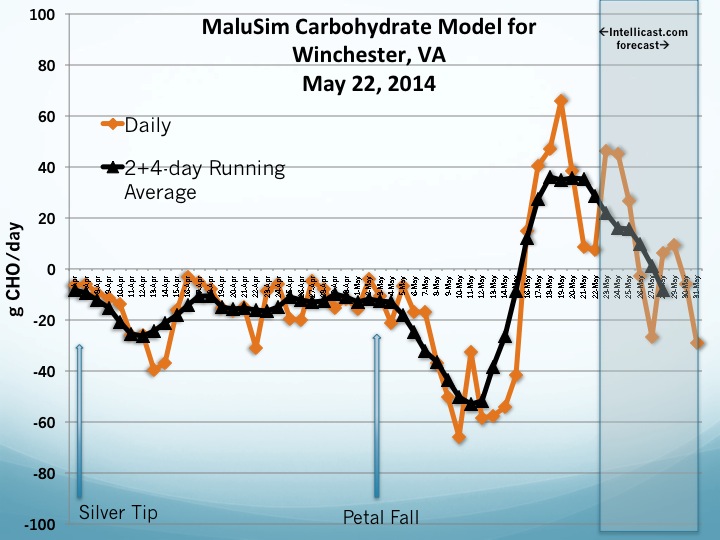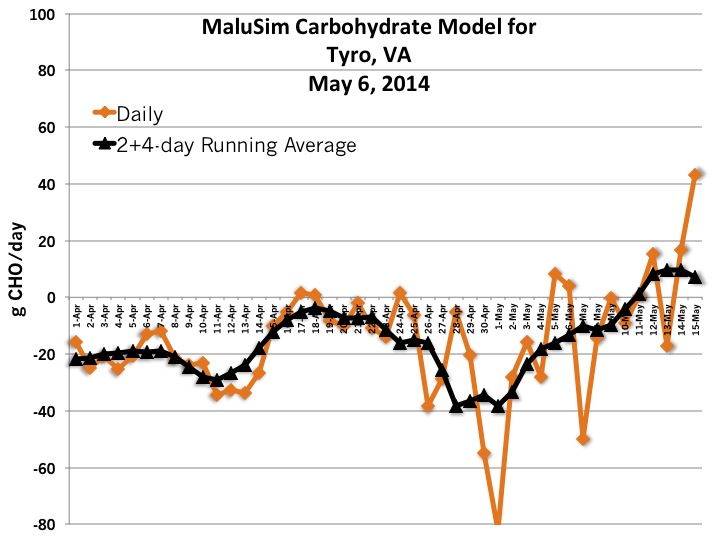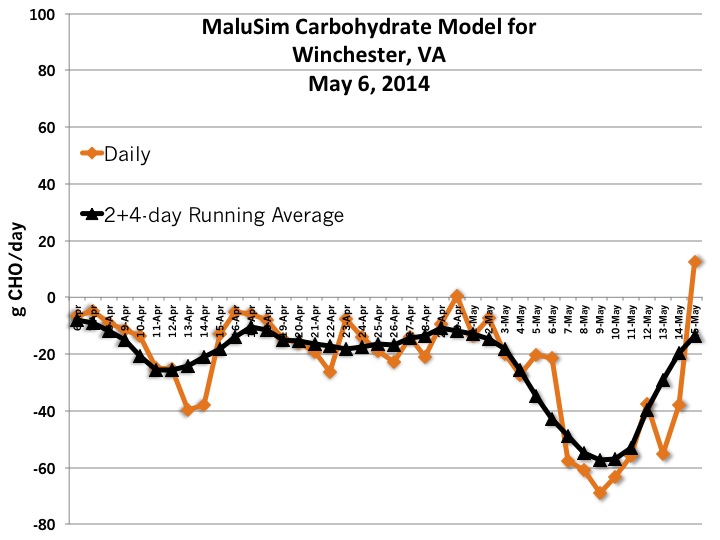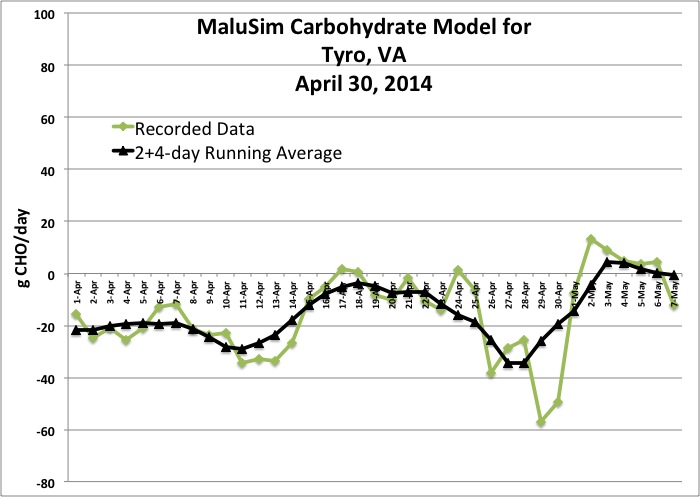LATE (“RESCUE”) THINNING
Where late (14-25 mm) thinning is still possible growers can use the following materials and combinations of materials in order of greater thinning potency:
- ethephon (0.5 -1.5 pints/100 gal)
- ethephon + carbaryl (1 pint)
- ethephon + carbaryl + oil (1 quart)
- ethephon + carbaryl + oil + NAA (5 ppm)
Ethephon applications can cause over thinning, so use the lowest rates and tank mix with the least number of other materials unless significant fruit removal is desired.
PROMOTING RETURN BLOOM IN APPLE
Ethephon (sold under the trade names Ethrel and Ethephon 2) can promote flower bud formation when applied from petal fall to about 6 to 8 weeks after full bloom. The greatest effect is from applications made 0 to 4 weeks after bloom. However, since ethephon can cause substantial fruit thinning, multiple weekly applications at rates 1/2 that of the thinning rate are recommended starting when fruitlets are greater than 30 mm. When possible, it is best to wait until after “June” drop has occurred. At a minimum, wait 7-10 days after the last thinning application before starting ethephon return bloom sprays. Additionally, do not apply ethephon to trees that are stressed or trees that are low in vigor.
A single ethephon application can be used at a high rate (up to 900 ppm). However, more consistent results are often obtained from multiple (3-4) applications made at 10-14 day intervals using lower rates (150-300 ppm). One common, and often effective strategy, is to make two applications in June and two applications in July.
Another strategy is to make 2-4 applications of ethephon at 150 ppm tank mixed with NAA at 5-10 ppm (or 2.5-5 ppm when tank mixed with spray oil). This approach has been beneficial for strongly biennial cultivars.
Sensitivity to ethephon is very different amongst cultivars, thus it is important to choose a rate specific to each variety. Do not exceed 8 pints per acre per year. If trees are over-cropped ethephon may not effectively give adequate return bloom the following season. Higher soluble solids and lower starch levels at harvest may be expected with some cultivars, particularly with high rates and/or late season applications. No loss of firmness has been detected with ‘Red Delicious’ at the optimum harvest date.
Ethephon sprays can reduce tree growth (dependent on timing and amounts used) and thus may not be desirable for young non-bearing trees if maximum tree growth is desirable.
HAND THINNING PEACHES
Hand thinning peaches to 6-8 inches apart on the branch will result in increased final fruit size and help prevent limb breakage. This activity will be most effective when completed over the next couple-few weeks. Hand thinning peaches later in the season will not have as much of an impact on final fruit size.




 Thinning applications made on Monday through Wednesday of this week will likely see an excessive amount of thinning, especially if fruit was 8-12 mm in diameter. Thinners that were applied on Thursday will likely have a moderate to strong response. Thinners applied Friday (if it stops raining!) through the weekend will have a normal to weak response. If the weather forecast holds, growers should consider slightly increasing rates and using a surfactant for thinning applications made over the weekend. I’ll run another MaluSim model on Monday.
Thinning applications made on Monday through Wednesday of this week will likely see an excessive amount of thinning, especially if fruit was 8-12 mm in diameter. Thinners that were applied on Thursday will likely have a moderate to strong response. Thinners applied Friday (if it stops raining!) through the weekend will have a normal to weak response. If the weather forecast holds, growers should consider slightly increasing rates and using a surfactant for thinning applications made over the weekend. I’ll run another MaluSim model on Monday.






